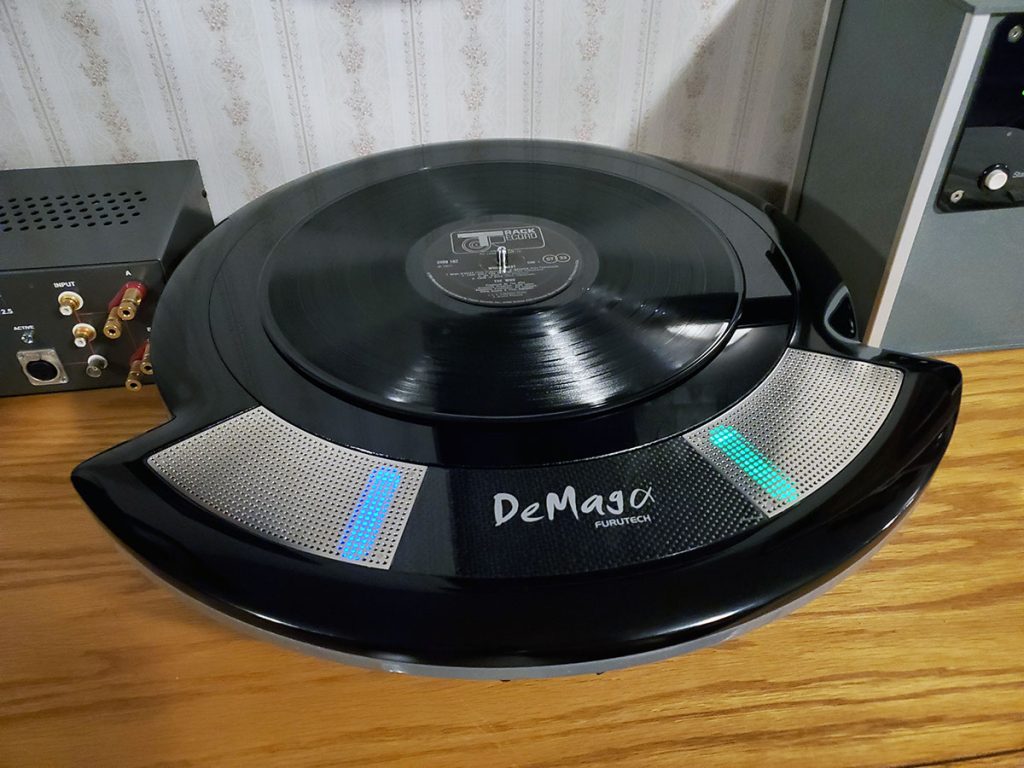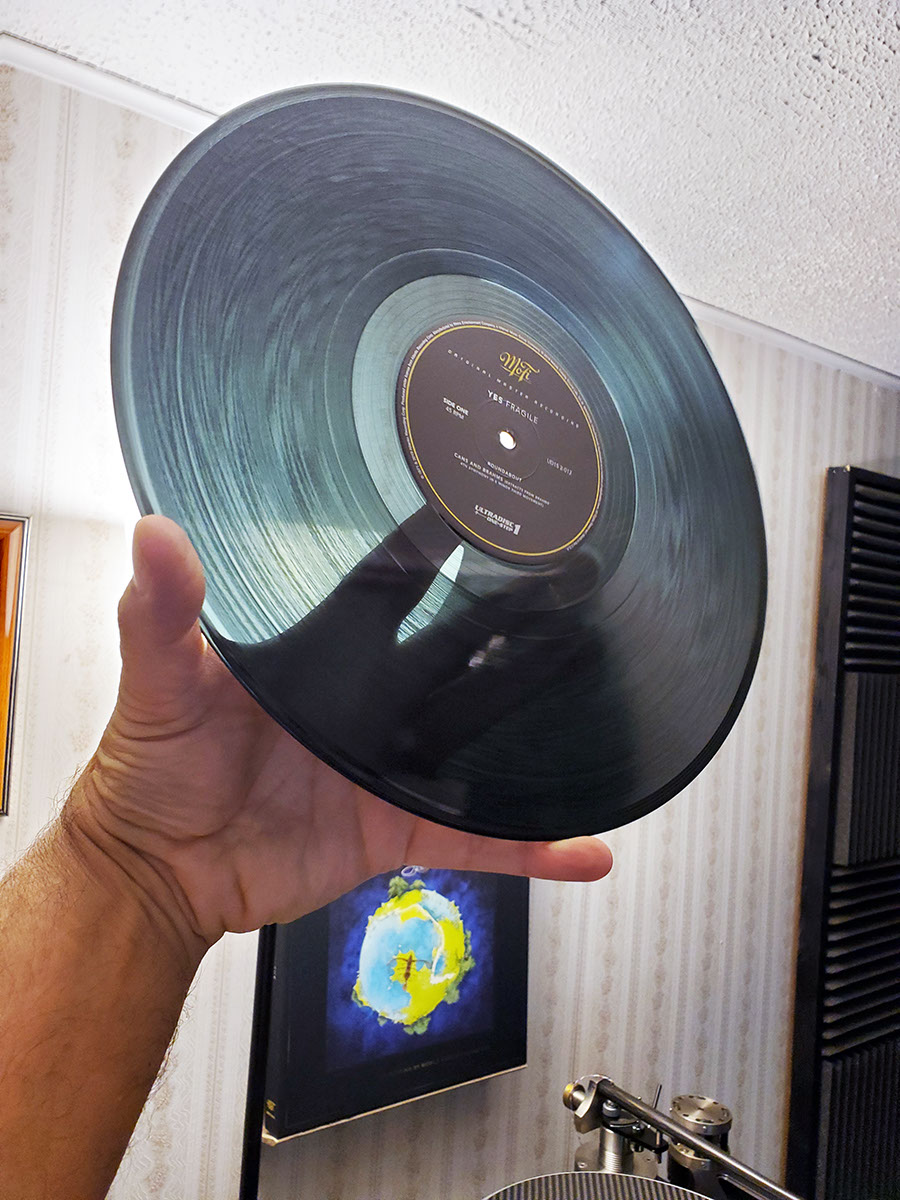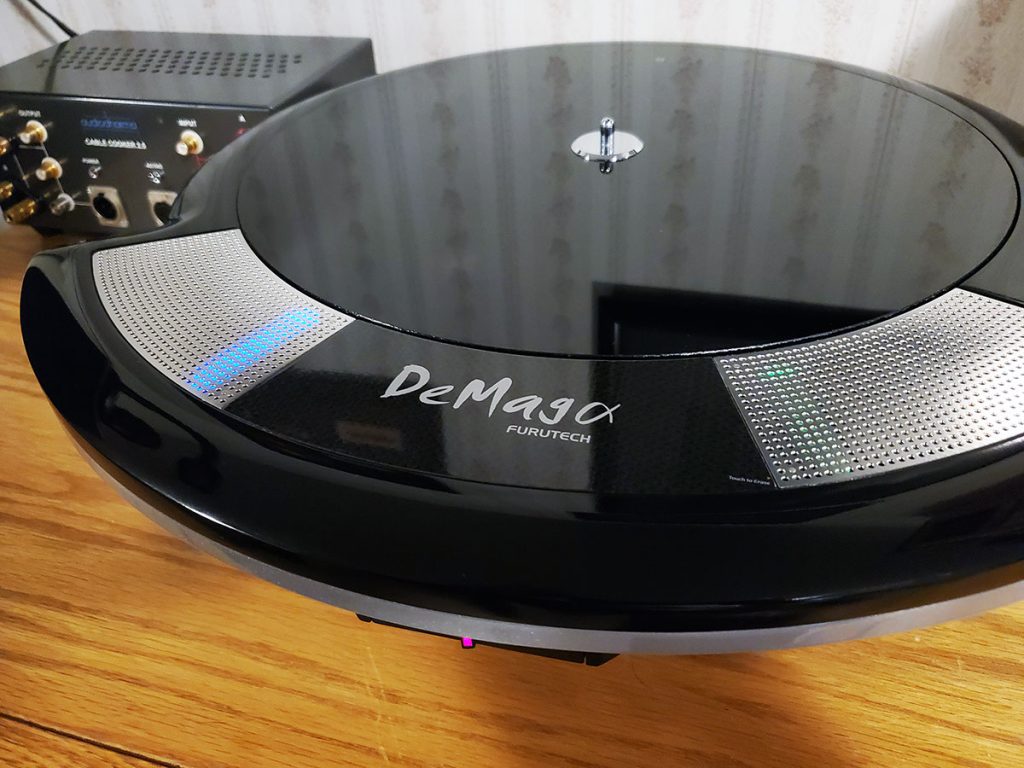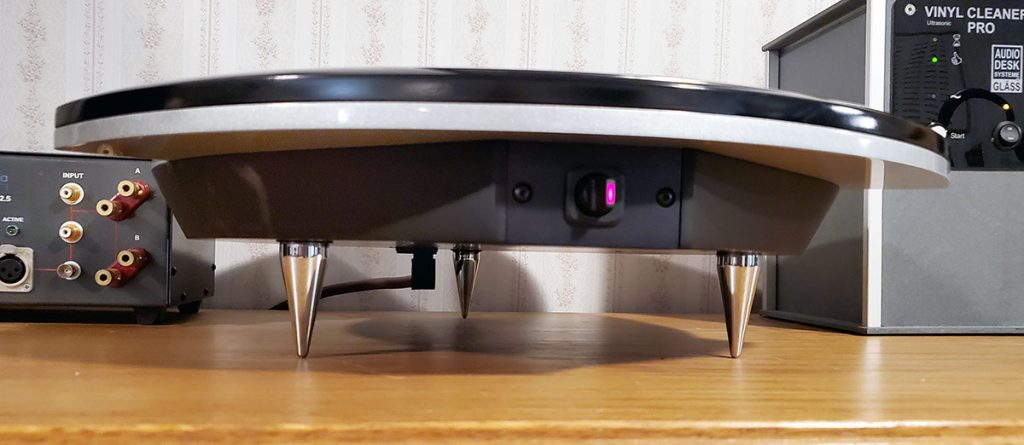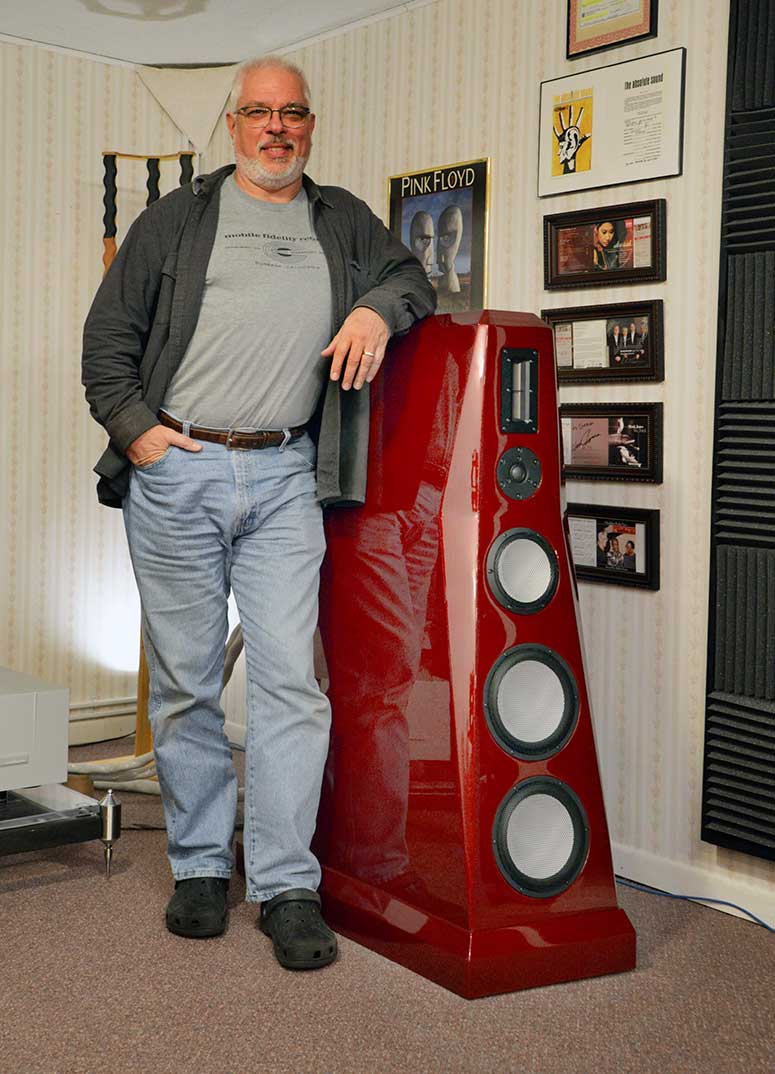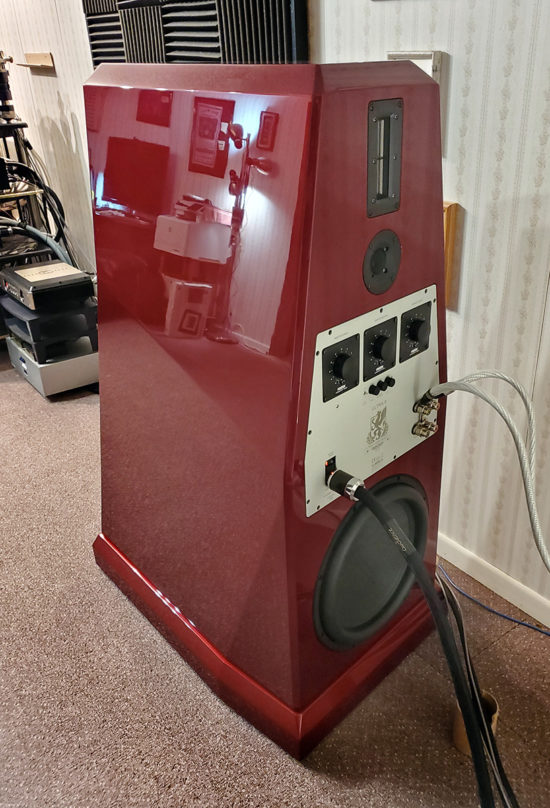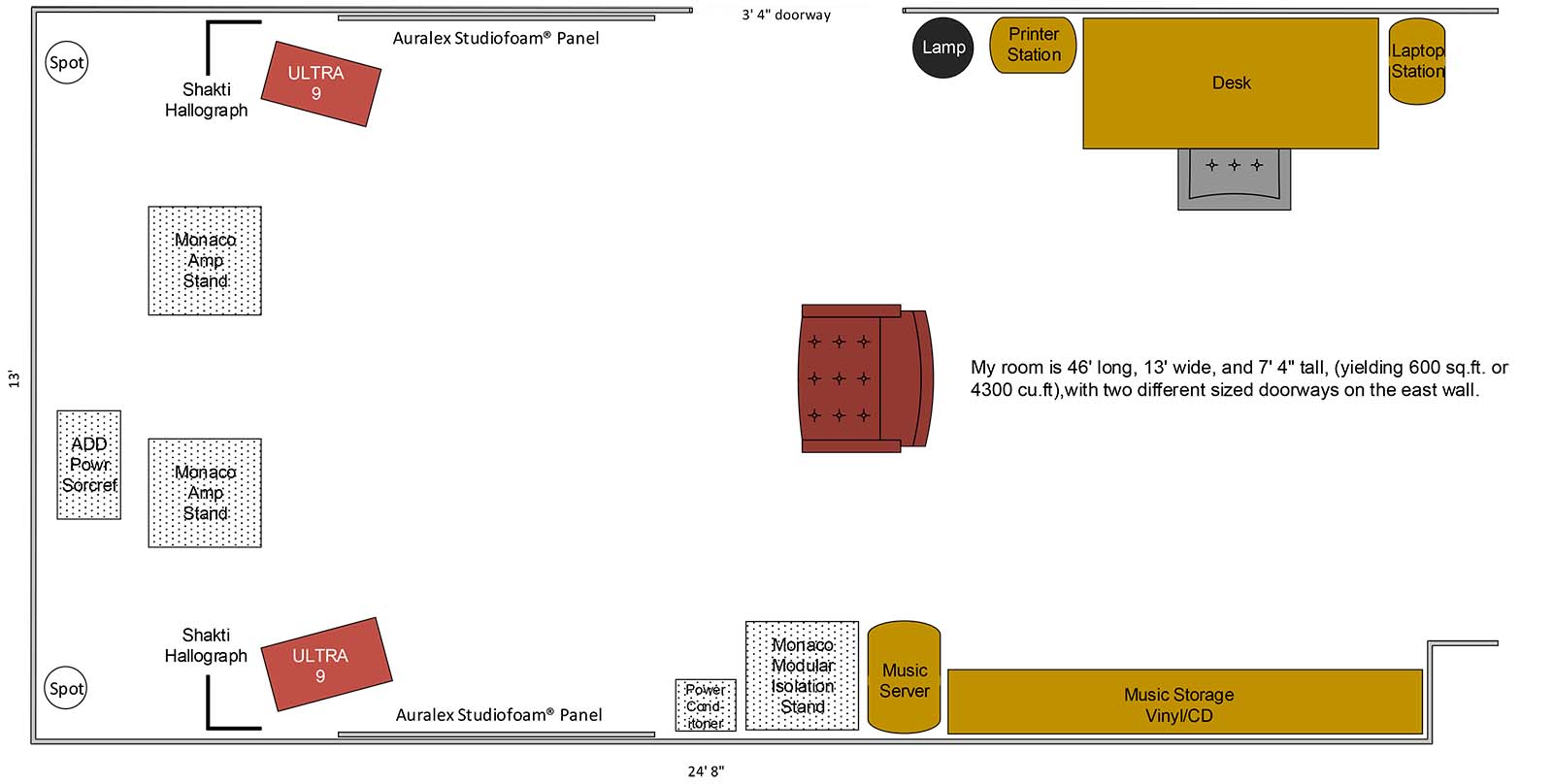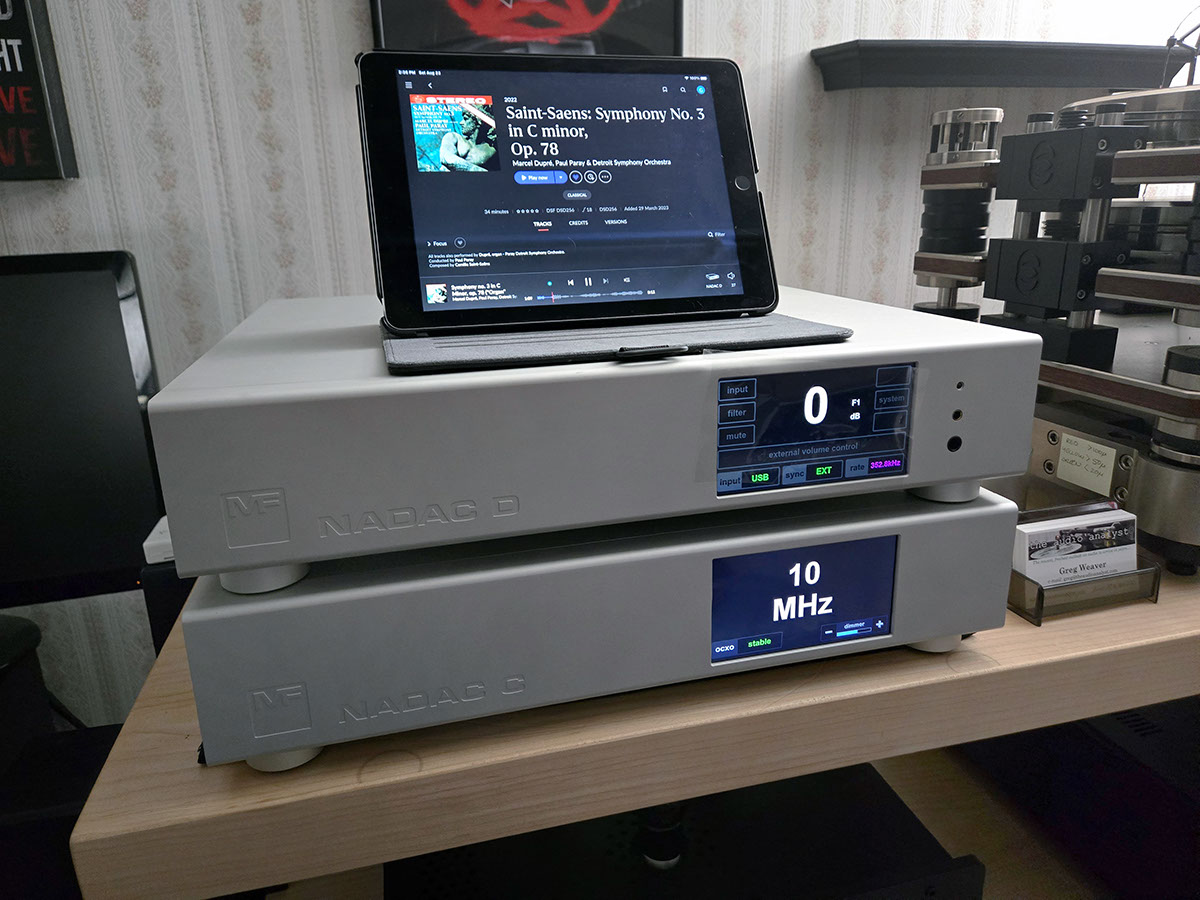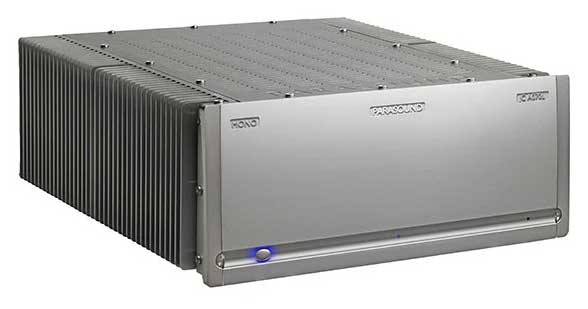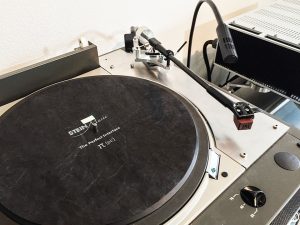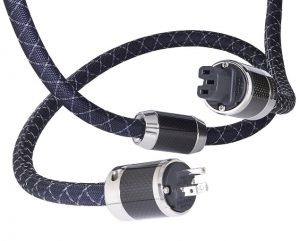What the Hell is That
It's no secret that I like to tweak. In fact, I made a name for myself and built a huge following in my early writing career writing about such minutiae. My third paid audio writing gig (after folding the audio analyst© that I had founded in 1988), saw me at full throttle on that mission in the mid 1990s. In my three years at that online journal, aside from writing twenty-three hardware reviews, ten media reviews (music and film), and three musings on different subjects from the virtues of vinyl to demystifying the underlying technology and resultant sonic characteristics of different loudspeaker cable constructions, I also wrote thirty-five tweaking articles that appeared in a monthly column.
From freebies like listening later in the evening and properly "dressing" your cables, to cheap but very effective DIY component racks and interconnects, I covered a lot of low-cost ways to get the best sound from your rig. In fact, that column was the most read feature of that online journal for the three years that it ran. After running out of material to write about, I had to retire the column even though it was immensely popular.
So it should come as no surprise that when finishing up the Furutech Cable Loom review (HERE), I asked industry luminary, and long-time set up assistant for the one and only late Harry Pearson of The Absolute Sound, Scot Markwell, if I might have a crack at the newest iteration of the Furutech LP Demagnetizer, the DeMagα. I was curious.
Just about nineteen inches across at its widest, (it is round, with an extended "wing" around about one-third of its diameter for the controls and switches), just under three inches thick, it holds itself about three inches off the surface it rests on by three threaded conical feet. That structure is essentially a housing for some very powerful electromagnets. This elegant and large unit works much like the now extinct tape or cassette deck head demagnetizer of yesteryear.
With your target item resting on the top of the platform, engaging the DeMagα causes the unit to generate intense, high frequency AC magnetic fields, with individual domains that rapidly and randomly alternate and realign, with diminishing power over the programmed cycle time, effectively canceling or nearly canceling, any magnetic fields, eliminating (or substantially reducing) any residual magnetism in the item placed on its surface.
And for the record, Furutech suggests using the DeMagα to degauss a whole host of items including interconnects, speaker cables, power cords, connectors, optical discs (CDs, DVDs, SACDs, etc.), or anything that you can place on it that can become magnetized.
Now, if your first thought here is, "What, a demagnetizer for LPs? Aren't they just plastic?" you would not be alone. At first blush, it may not appear to make any sense. How can a 33 1/3 long play record be magnetized, it's just vinyl after all, right! To get a better idea of how this could be we'll need to take a closer look at the formulation of the "vinyl" used to produce a twelve-inch long-play vinyl record?
Vinyl Formulation
Starting in the 1940's, phonograph records began to be made from copolymers of vinyl chloride (PVC) and vinyl acetate (PVA). The ratio typically used was 2 parts PVA copolymer to one-part PVC monopolymer, with the total vinyl polymer amounting from 75-96% of the record weight. The other 4%-25% are made up of a myriad of additives that are critical to the production, performance, and stability of the Long-Playing record. Such additives fit into several categories, including heat stabilizers, lubricants, colorants, fillers, plasticizers, and conditioners. Let's take a quick look at each.
Record production would not be possible without heat stabilizers. The choices made here are typically metal salts of fatty acids or similar organometallic compounds, often called "metallic soaps." The metals are typically lead, tin, barium, calcium, cadmium (disappearing), and zinc and the fatty acids are typically lauric or stearic acids. These stabilizing additives typically make up anywhere from between one half of one percent to one and one half of one percent of the resin mix, often including some combination of them rather than just one monolithic variety. It should be noted that some of these compounds also assist as mold release agents. More on that soon enough.
Their main function is to neutralize the HCl gas that is generated by the temperatures required for the production and pressing of records. PVC has low thermal stability and degrades in a dehydrochlorination reaction at temperatures above 70⁰ C (158⁰ F). This is crucial as extruder temps are typically 155⁰ C (311⁰ F) and molding presses are typically at 120 C (248⁰ F). The reaction is autocatalytic and the released HCl catalyzes further breakdown.
Without getting too deeply into the woods here, in addition to heat, UV and pollution exposure can further continue this autocatalytic reaction over the records lifetime, further validating the use of these stabilizers. Plus, scavenging the HCl gas released during the pressing process, the stabilizers also protect the press stampers from staining and etching, prolonging their usable lifespan.
It is also customary to add a lubricant to the resin mix to promote the flow of the resin during processing. The lubricant is typically a hard wax, either natural, like Montan or Carnauba, or of a synthetic nature, like distearyl amide. Even some Fatty acid esters can be employed as lubricants, with the cationic type doubling as conditioners.
Lubricants typically comprise one percent or less of the resin mixture and promote the release of the pressed vinyl pie from the stamper. But it should be noted that they are integrated into the resin mix, not something added to the stamper. As this lubricant is evenly dispersed throughout the formulation, it also reduces friction at the finished record surface, which reduces heat and the potential PVC breakdown as a stylus traces the groove, promoting "quieter" playback and longevity.
It is also customary to add a colorant so that the record surface is more easily observed, making it easier to spot flaws or defects, or for novel coloration. Carbon black is the most common colorant used, and it is typically included at one-quarter to one-half of one percent of the formulation. Aside from enhancing the wear resistance of the LP, it allows for the even distribution of electrical charges and can increase the rate at which those stored charges can be dissipated, overall, reducing the retention of static charge. Some resin recipes (transparent, mono-chromatic, multicolored, etc.) deliberately forego the addition of carbon black, and may use another colorant, such as titanium oxide, which results in a white base.
Some resin producers add fillers, mostly to reduce the amount of the comparatively expensive virgin polymer used, which while may help reduce overall cost, also augments the record's durability. Many different fillers have been used over time, ranging from cellulose-derived products to diatomaceous earth, but they all seem to produce greater background and surface noise. The most common modern filler is recycled vinyl, known as regrind. But introducing regrind adds any contaminants present in the original formulation to the new vinyl product, again resulting in noisier playback. Therefore, most LP fanatics search for "virgin" vinyl pressings, as they contain no regrind or other fillers to elevate the base surface noise.
Plasticizers are used to change the viscosity and melting properties of the resin mix, improving moldability and flexibility of the final product. They essentially decrease the attraction between polymer chains allowing for a flexible record that is more resistant to breakage. As an example, in the early 1970's, there was a cost cutting move to make thinner, more flexible records. RCA used epoxidized soybean oil (ESBO) and some others even found that using up to three percent toluene allowed for thinner records. Remember the nightmare that was the Dynaflex!
A few record manufactures even include conditioners in the mix both control static and to further aid with lubrication. The typical materials used include quaternary ammonium salts with long fatty-acid derived chains, called "quats." Beside acting as a surfactant, some quats have the added benefit of having biocidal properties. Resin formulations that include these conditioners could result in records with somewhat lower surface friction, lower potential for static charge, and resistance to microbial contamination. In fact, these "quats" are still used to produce "ant-static" record sleeves.
The fact is that the Carbon Black material added to the vinyl formulation as the pigment material is the culprit that degaussing with the DeMagα's addresses. The minute amount of ferrous material native to that colorant additive causes the record to become magnetized. Furutech's testing at the Tokyo Nanotechnology center using an IHI Gauss meter showed that after a typical LP was treated with the DeMagα, the magnetic field of the LP was lowered from 620~630 nT to 572~582 nT, or nearly then percent. A nanotesla (nT) is a unit of magnetic field strength, equivalent to one billionth of a Tesla, and one Tesla is equivalent to ten thousand Gauss.
As a brief aside, the most impressive formulation I've heard to date is called "SuperVinyl." Developed by NEOTech and RTI, it is currently used by Mobile Fidelity in their superb UltraDisc One-Step series of recordings. By all accounts, both extraordinarily expensive and extremely painstaking to produce, the special proprietary compound provides monumental improvements in lowering surface noise and enhancing groove definition. This new formulation also features a new carbonless dye (hold the disc up and you can see through it easily) and produces what Mobile Fidelity claims to be the world's quietest surface. I was utterly astonished at how silent these LPs are, especially during lead-in and between tracks. Without reservation I would suggest that this formulation, and these "SuperVinyl" Mobile Fidelity UD1S pressings, represent an order of magnitude of improvement over the next quietest pressings I've heard. I've personally never experienced a quieter, more dynamic formulation.
Are You Experienced
So, now that we have that technical stuff behind us, let's talk about what DeMagα does for your records. I will be the first to admit that I was more than just a bit skeptical. But what I found over my time with it was that the degree of enhancement varies from "Meh," to "OH MY GAWD." Let's take that last example, shall we?
Fellow scribe and PF writer Maurice Jeffries makes an annual winter pilgrimage to the Midwest to spend a long weekend with yours truly. We spend three days auditioning music, eating good food, drinking old Scotch, and hopefully learning some things while we listen to my reference system (my system can be seen by clicking on the red Greg Weaver at the top of this page).
During his last visit, after hours of listening and acclimation to the system, I pulled out my original 1971 UK Island Records first pressing of Cat Stevens Teaser And The Firecat (ILPS 9154), clamped it to my Kronos Sparta, and dropped the needle on side B, track 4, "Moonshadow."
After it played, and without telling Maurice what I was going to do, as he sat in my listening chair facing forward the entire time, I took that very same LP to the DeMagα, placed in on the spindle and ran its 30-odd second cycle. When it finished, I put the LP back on the Kronos Sparta, and played "Moonshadow" again. The elapsed time between plays was just 60 seconds or so.
It didn't take ten seconds of play for his jaw to drop open and for expletives to fall out of his mouth! He looked at me and said, "Holy crap! What record is this?"
I said, "It's the same record."
He asked again, "No, I know it is the same music, but what LP is it?"
Again, with a little more emphasis, I said, "It's the same record."
Yet again, he queried, "No, I know that, but what pressing is this?"
This time I leaned in and said, "IT'S THE SAME RECORD!"
When the reality of what I was communicating to him sunk in, that we were in fact playing the very same record we had just listened to, his jaw dropped even further!
I completely understood his astonishment. This play almost sounded like a different mastering. It was quieter, had more impact, more space, more detail, was remarkably clearer, had less "glare" and "haze," and was even slightly louder than the first play, all with NO CHANGES to the system settings. It clearly sounded like a different pressing than the one we had just heard and was enhanced in just about every conceivable attribute.
Bass was not just more extended, it was tighter, more focused, with notably better pitch definition. Everything, from Cat's voice through the myriad acoustical instruments, even the precision of imaging and size and boundaries of the soundstage, was much more clearly and openly rendered. The space of, and the air and openness "around" individualize voices, was more apparent. There was the general sense that a pall of haze or a layer of film, grunge, or murkiness, one that hadn't been noticeable beforehand, had now been excised. In general, everything had taken a not-so-insignificant step forward toward a more refined and obvious clarity, allowing this same LP to yield an entirely new and rousing level of authenticity and naturalness.
I want to stress that this result, with this record, was a benchmark and represented the pinnacle of the experience using this device. Many other LPs, while they exhibited a clear degree of improvement, did not show this kind of transformation. Still others showed little, if any significant, improvement. It is most certainly related to the quality of the vinyl formulation used for each particular record, which is in large part why I went into such detail about such formulations and additives. But to my mind, if it can have this transformative an effect on any LP at all, it has to be considered as a necessary, not an accessory.
Is it worth $3,300? That is clearly a matter of choice by the person opening their wallet to pay for it. On a system as resolving and transparent as I am lucky enough to live with, that answer is a resounding yes. In fact, I'd suggest that if you don't have the wherewithal to own this little magic maker, you best ought not to even try it. Otherwise you will most assuredly find yourself mourning the unfillable vacuum left once it is gone.
Most enthusiastically recommended.
DeMagα
Retail: $3300
Furutech
Furutech Bldg.
3-9-1 Togoshi
Shinagawa-Ku
Tokyo 142-0041, Japan
US Importer
Elite A/V
SPECIFICATIONS
- Dimension: 487mm/19" W × 68mm/2.7" H (without spikes) × 470mm/18.5" D Approx.
- Net Weight: 11.0Kgs/24lbs Approx.
- Rating: 110VAC ±15V (USA)
- Rating: 230VAC ±10V (Europe)





